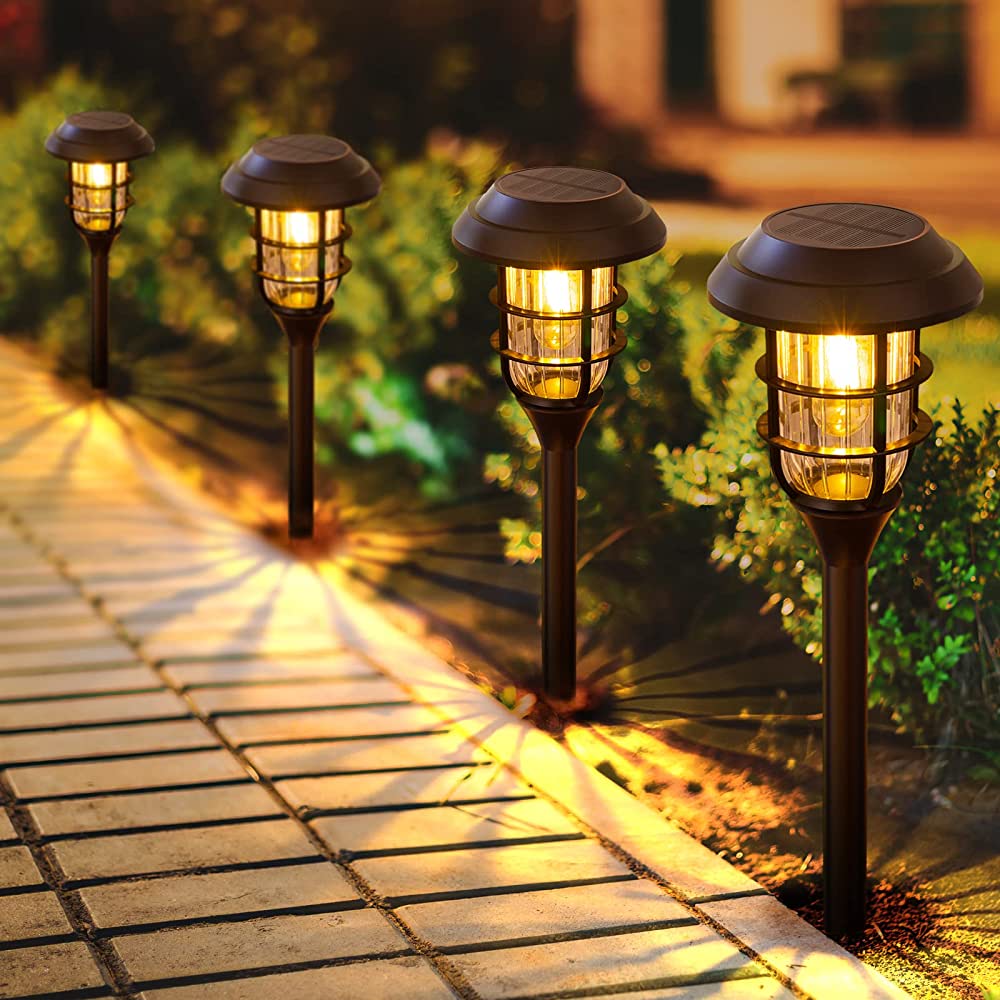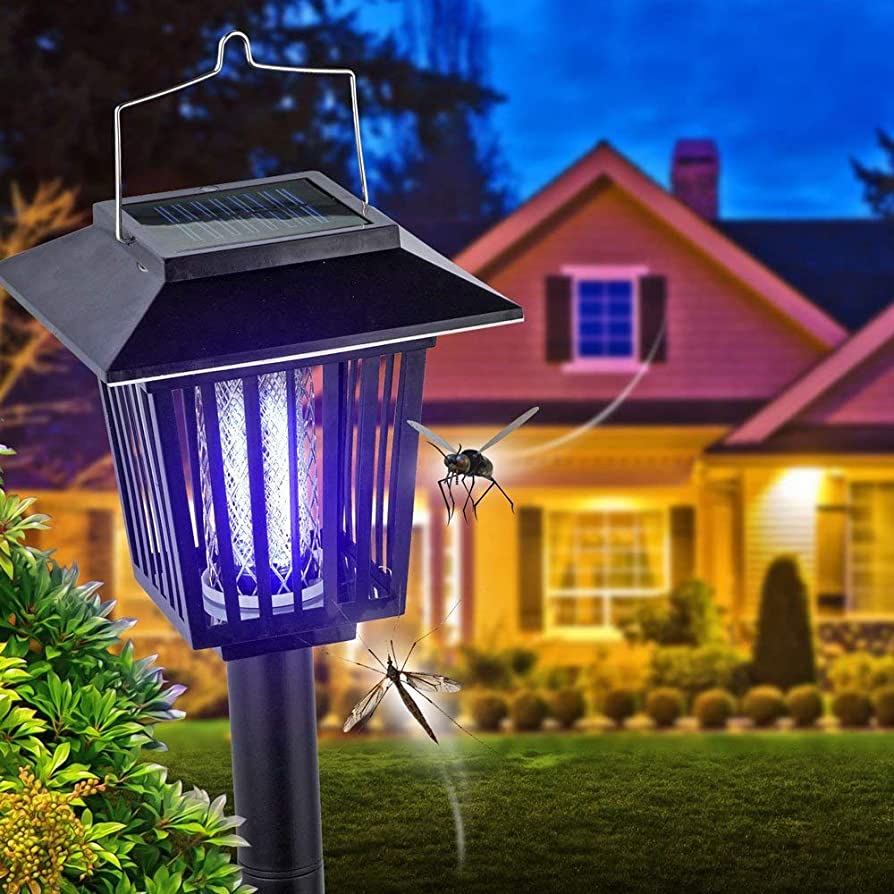
Solar Lights
Solar lights are outdoor lighting fixtures that use solar panels to convert sunlight into electricity.
They are eco-friendly, energy-efficient, and cost-effective alternatives to traditional electric lights.
Solar lights are becoming increasingly popular in both residential and commercial settings due to their many advantages.

This introduction will provide an overview of solar lights, their benefits, and how they work.
Types of Solar Lights
There are several types of solar lights available on the market, each designed for different outdoor lighting needs. Here are some of the most common types of solar lights:
Solar Road Lights:
These are outdoor lighting fixtures that are typically installed along roadways, highways, and other similar infrastructure. They are powered by solar panels and are designed to operate at night, providing illumination for drivers and pedestrians.


Solar Garden Lights:
These are outdoor lighting fixtures designed for use in gardens, parks, and other outdoor spaces. They are powered by solar panels and typically use LED lights to provide ambient illumination.
All-in-One Solar Light:
This is a type of solar light that combines the solar panel, battery, and LED lights into a single unit. All-in-one solar lights are typically used for outdoor lighting applications, such as pathway lighting and security lighting.


Solar Wall Lights:
These are outdoor lighting fixtures designed to be mounted on walls, fences, or other vertical surfaces. They are powered by solar panels and are typically used for security lighting or as accent lighting to highlight architectural features.
Solar Insect Killing Lights:
These are outdoor lighting fixtures that are designed to attract and kill insects using UV light. They are powered by solar panels and are typically used to control insect populations in outdoor areas, such as parks and gardens.

Overall, the type of solar light you choose will depend on your outdoor lighting needs and the size of the space you want to illuminate.
How Solar Lights Work

Solar lights work by harnessing energy from the sun and converting it into electrical power to illuminate outdoor spaces. The basic components of a solar light include a solar panel, a battery, an LED light, and a controller or sensor. Here is how the process works:
Solar panel: The solar panel is the most crucial part of the solar light as it absorbs sunlight during the day and converts it into electrical energy. The panel contains photovoltaic cells that convert the sun’s energy into direct current (DC) electricity.
Battery: The battery stores the electrical energy generated by the solar panel during the day. It is usually a rechargeable battery that can provide power to the light fixture at night.
LED light: The LED light is the actual lighting component of the solar light. It provides bright and energy-efficient illumination that can last for several hours.
Controller/sensor: Some solar lights have a controller or sensor that regulates the amount of light produced by the LED based on the surrounding environment. For instance, the sensor may turn on the light when it detects motion or darkness.
During the day, the solar panel absorbs sunlight and converts it into electrical energy. The energy is stored in the battery, which powers the LED light at night. The controller or sensor may turn on or off the light based on the amount of light available in the environment or the presence of motion. The process repeats every day, making solar lights an eco-friendly and sustainable lighting solution.
Benefits of Using Solar Lights
There are several benefits to using solar lights. Here are some of the most significant advantages:

Energy-efficient: Solar lights use renewable energy from the sun, making them energy-efficient and cost-effective. They don’t require electricity from the grid, which means they won’t increase your energy bills.
Eco-friendly: Since solar lights use renewable energy, they are eco-friendly and have a minimal impact on the environment. They don’t emit harmful gases or pollutants, making them a sustainable lighting solution.
Easy to install: Solar lights are easy to install since they don’t require any wiring or electrical connections. You can place them anywhere in your yard or garden without worrying about running wires or cables.
Low maintenance: Solar lights are low maintenance since they don’t have any moving parts or wiring. Once installed, they will work automatically without any additional effort from you.
Versatile: Solar lights come in various shapes, sizes, and styles, making them a versatile lighting solution for different outdoor spaces. You can use them for pathways, gardens, decks, and more.
Increases safety and security: Solar lights provide bright and reliable illumination that can improve safety and security in your outdoor spaces. They can deter intruders and make it easier for you to navigate around your property at night.
Cost-effective: While solar lights may have a higher initial cost than traditional electric lights, they are cost-effective in the long run since they don’t require electricity from the grid. They are also durable and long-lasting, which means you won’t have to replace them frequently.
Overall, solar lights are an excellent choice for eco-conscious homeowners who want an energy-efficient and sustainable lighting solution for their outdoor spaces.
Factors to Consider When Choosing Solar Lights
When choosing solar lights, there are several factors you should consider to ensure that you choose the right type of light for your needs. Here are some essential factors to consider:
Brightness: The brightness of the solar light is essential, depending on where you want to install it. For instance, you may need brighter lights for security or safety purposes, while you may prefer softer lights for ambiance or decoration.
Battery Capacity: The battery capacity of the solar light will determine how long it can provide light after charging. Consider the amount of sunlight available in your area and how long you want the lights to stay on before choosing a solar light with an appropriate battery capacity.
Solar Panel Efficiency: The efficiency of the solar panel will determine how quickly it can charge the battery. Look for solar lights with high-quality solar panels that can absorb sunlight efficiently and convert it into electricity.
Weather Resistance: Consider the weather conditions in your area and look for solar lights that can withstand extreme temperatures, rain, or snow. High-quality materials, such as aluminum or stainless steel, can provide better durability and resistance to harsh weather conditions.
Installation: Look for solar lights that are easy to install, especially if you plan to install them yourself. Some lights come with stakes or mounting brackets that make installation simple and straightforward.
Cost: Solar lights can vary in price, depending on the quality, features, and brand. Consider your budget and the long-term cost savings of using solar lights compared to traditional electric lights.
By considering these factors, you can choose the right type of solar light that will meet your outdoor lighting needs and provide long-lasting and reliable illumination for your outdoor space.
Installation and Maintenance of Solar Lights
Proper installation and maintenance are crucial for ensuring that your solar lights function correctly and provide optimal lighting for your outdoor space. Here are some tips for installing and maintaining your solar lights:
Installation:
Choose the right location: Solar lights need to be placed in an area where they can receive direct sunlight for several hours a day. Choose a location that is free from obstructions such as trees, buildings, or other structures.
Position the solar panel correctly: The solar panel should be positioned facing south or southwest to receive maximum sunlight. It should also be angled correctly to ensure it can absorb the most amount of sunlight.
Ensure stability: If you are installing solar lights with stakes, ensure that they are inserted into the ground securely and are stable. For wall-mounted solar lights, use appropriate brackets or screws to secure them to the wall.
Maintenance:
Clean the solar panel: The solar panel should be cleaned regularly to ensure that it can absorb sunlight efficiently. Use a soft cloth or brush to remove any dust or debris that may have accumulated on the panel.
Check the battery: Check the battery regularly to ensure that it is fully charged and functioning correctly. Replace the battery if necessary.
Check for damage: Inspect the solar light for any damage, such as cracks or broken parts. Replace any damaged parts to ensure the light functions correctly.
Replace bulbs: If the solar light uses a bulb, check it regularly and replace it if necessary. Always use the correct type of bulb specified by the manufacturer.
By following these tips for installation and maintenance, you can ensure that your solar lights provide reliable and long-lasting illumination for your outdoor space.
FAQ
A solar light is a lighting system that uses solar panels to convert sunlight into electricity, which is stored in batteries and used to power the light at night.
Solar lights use photovoltaic cells in the solar panel to absorb sunlight and convert it into electrical energy. The energy is then stored in a battery and used to power the light at night.
The brightness of solar lights varies depending on the type and quality of the light. Some solar lights can be just as bright as electric lights, while others may have a softer or dimmer glow.
The lifespan of solar lights depends on the quality and type of the light. On average, a high-quality solar light can last up to 10 years or more with proper maintenance.
Yes, solar lights can still work in cloudy weather, but the amount of light they can produce may be reduced. However, high-quality solar panels can still absorb some light even in overcast conditions.
Yes, most solar lights are designed to be easy to install, with no wiring required. They typically come with stakes or mounting brackets that make installation simple and straightforward.
Maintaining solar lights involves regularly cleaning the solar panel, checking the battery, and inspecting the light for any damage. Refer to the manufacturer’s instructions for specific maintenance requirements.
Yes, solar lights can save you money on your electricity bill because they do not require electricity from the grid to operate. They are powered by sunlight, making them a cost-effective and eco-friendly lighting solution.
Conclusion
In conclusion, solar lights are an excellent alternative to traditional electric lights for outdoor lighting. They are powered by the sun, making them cost-effective and eco-friendly.
They come in different types, including path lights, spotlights, and string lights, and can be used for various purposes such as security, safety, ambiance, and decoration. When choosing solar lights, consider factors such as brightness, battery capacity, solar panel efficiency, weather resistance, installation, and cost.
Proper installation and maintenance are crucial for ensuring that solar lights function correctly and provide optimal lighting for your outdoor space. With their many benefits and ease of use, solar lights are a great investment for any outdoor lighting needs.
